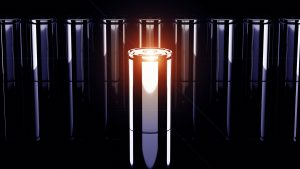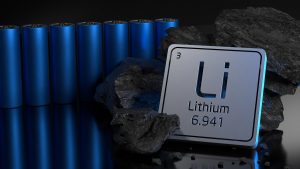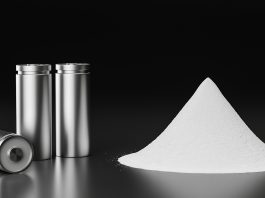Rob Shewchuk, Co-Founder, CEO and Director of LithiumBank, details the results from the company’s PEA at its Boardwalk lithium brine project in Western Canada.
Based in Western Canada, lithium exploration and development specialist LithiumBank is working to develop a world-class strategic battery-grade lithium resource within Western Canada to establish the region’s position as an important contributor to North America’s strategic energy future.
Within its portfolio of several projects, LithiumBank is making substantial progress at its flagship Boardwalk lithium brine development project in west-central Alberta. The project consists of 30 Alberta metallic and industrial mineral contiguous permits covering an area of 572,237 acres, within a LithiumBank total land package of approximately four million acres in west-central Alberta.
Recently, the company has announced the results from its Preliminary Economic Assessment (PEA) on the project, which included a number of exciting highlights. To find out what these results mean for the company and for the project’s progression, The Innovation Platform spoke to Rob Shewchuk, Co-Founder, CEO and Director of LithiumBank.
Can you tell us more about your Boardwalk project?
The Boardwalk project is a development-stage lithium brine project estimated to produce 31,350 metric tonnes per year of lithium hydroxide monohydrate (LHM), based on the recently published Preliminary Economic Assessment, effectively dated 16 June 2023.
The area of production established in the PEA is in the southern portion of the larger overall combined Indicated & Inferred NI 43-101 resources of 6.2 million tonnes of lithium carbonate equivalent (LCE) and is located in west-central Alberta, approximately 85km east of the city of Grande Prairie and 270km northwest of the city of Edmonton.
The Leduc Formation, currently shut-in, has actively produced oil and gas for over 70 years, leaving a legacy of geological and production data from hundreds of wells, and abundant surface infrastructure, such as roads, pipelines, power lines, a locally skilled labour force, well pads, and hundreds of past hydrocarbon wells.
The project is overlain by 100% owned contiguous crown mineral permits covering an area of 572,237 acres with no current operating oil and gas producers in the Leduc Formation.
What were you hoping to achieve from the Preliminary Economic Assessment?
The results of the PEA represent the 31,350-MT-per-year North-American-based lithium project with a comparatively short timeline to production over traditional mining methods. The need for domestically-sourced lithium is massive and the Boardwalk project can potentially bring a battery-grade LHM product to market in three to four years’ time.
The PEA is a post-inflationary economic assessment in today’s current financial environment and acts as a solid baseline which carries an impressive $2.7bn net present value (NPV) and $587m annual earnings before interest, taxes, depreciation, and amortization (EBIDTA) on a pre-tax basis (see summary in Table 1 below).
LithiumBank is continuously working on making enhancements to this baseline Preliminary Economic Assessment that will make positive impacts to the financial model, which include:
- The Government of Canada announced 30% Investment Tax Credit (ITC) for Clean Technology Manufacturing in its 2023 budget. Refundable tax credit will be applied on capital expenditures for the extraction and processing of critical minerals;
- Next-generation sorbent being developed by Conductive, the prover of the lithium brine Direct Lithium Extraction (DLE) technology chosen for the PEA, is expected to reduce costs, increase efficiency and reduce reagent consumption;
- Alternative DLE technology trade-off studies;
- Use of smaller electrical submersible pumps(ESPs) would significantly reduce capital expenditures;
- Repurposing of existing oil and gas wells and surface infrastructure would significantly reduce capital expenditures;
- Reduction of well and power requirements through enhanced 3D reservoir modelling and new drilling information; and
- Utilise ZS2 Technologies Inc. to capture and sequester CO2 emissions to produce carbon credits, and lowering brine reinjection amounts by at least 10%.
How was the PEA carried out?
LithiumBank sought out best-in-class industry experts from various backgrounds who conducted multiple trade-off studies to report reliable conclusions.
Hatch was the lead author of the Preliminary Economic Assessment and fully designed the DLE processing plant and downstream chemical upgrading to a battery-grade LHM product. Contributions from other third-party consulting firms, such as GLJ, Fluid Domains, APEX Geosciences, and Scott Energy are highly qualified professionals with decades of industry experience.
Using highly qualified professionals was important as DLE is in a developmental stage and will benefit from having the brightest of minds helping to drive this project forward.
What are the key findings from the PEA? Has it confirmed your hopes?
The key takeaway for us is that this is indeed possible. We can see the pieces falling into place. The process in which to go from a raw brine into a battery-grade product is complex but it can be broken down into multiple simplified pieces. Each piece is not necessarily a novel technology but may have to be re-purposed for extracting lithium. Essentially, it is all about finding the right pieces and putting them in the right places to solve the puzzle.

The PEA demonstrates Boardwalk to be a robust project with an impressive EBITDA and NPV. This baseline study allows for several enhancements that can be made, and ones LithiumBank are working towards achieving in a timely fashion.
Has the PEA revealed anything that you didn’t expect? If so, what does this mean for the Boardwalk project?
There were no real surprises in preparing the Preliminary Economic Assessment. The PEA was prepared by conducting systematic test work, so we have a high level of confidence in the design for the level of test work performed.
However, LithiumBank’s mandate to continuously test multiple technologies has proven worthwhile as the test work revealed there is more than one way to successfully extract lithium and different technologies can be effective. Having a baseline PEA gives LithiumBank the ability to rapidly compare these alternative DLE technologies and we expect to continue to enhance the Boardwalk economics.
When we look at the CapEx of the overall project of $2.1bn, it is not comparable to a project priced out just two years ago. In today’s financial environment, the cost of materials and labour have increased substantially since the pandemic. LithiumBank has outlined a set of enhancements that are achievable and can make a meaningful impact in reducing the CapEx.
We also considered the environmental footprint in all aspects of the design, from the well pads to the CO2 emissions, water consumption, and the processing plant. It is because of this that we are able to work with other groups such as ZS2 Technologies which presents the opportunity to monetise the CO2 emissions and another critical mineral, magnesium, which is also found in high quantities in our brine.

What does the PEA now mean for the next stage of the project? What is the projected plan/timeline moving forward?
With the PEA complete, we now have a strong foundation to build off and continue to add value by further de-risking Boardwalk. There are enhancements we have pointed out that we can do to strengthen the overall viability of the project that have been discussed already and LithiumBank are working on them.
In the second half of 2023, LithiumBank will be completing at least two wells, drilling through the entire Leduc Formation at Boardwalk and conducting extensive testing in terms of hydrogeological characterisation and its chemistry/lithium concentrations. This will be detailed subsurface modelling that, together with new information from drilling, will allow for an updated Resource Estimate with Measured and Indicated (M&I) resources of lithium.
LithiumBank is also planning to run a pilot plant in H2 of 2023 that will replicate an operational commercial ion exchange (IX) process at a scale of approximately 1:85.
Please note, this article will also appear in the fifteenth edition of our quarterly publication.









